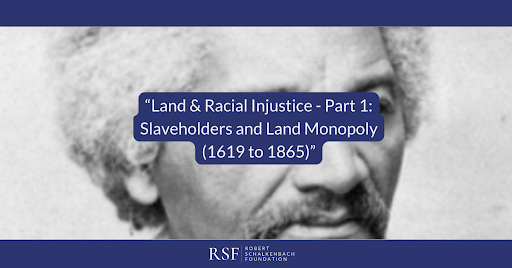This is the first piece in an ongoing series that examines the role that control of land has played in racial injustice throughout Black history in the United States:
Part 1: Slaveholders and Land Monopoly (1619 to 1865) 👈 (you are here)
Part 2: 40 Acres and a Ghoul (1865 to 1910)
Part 3: Black Exclusion, White Subsidy (1910 to 1970)
Part 4: The Invisible Hand of the Housing Market (1970 to Today)
Part 5: Reaping What Was Sowed
Introduction
It is Black History Month, a time for us to contemplate the journeys of Black people through American history, to honor their struggles and celebrate their triumphs. In this series of articles, we hope to make a somber yet constructive contribution to this conversation, by focusing on the unique role that control over land has played in aiding and abetting racialized exploitation throughout US history.
Our first four articles will traverse the myriad ways in which land ownership has been a powerful vector for racial injustice over the past three centuries. While this process has taken different forms in each of the four phases we discuss below, the underlying mechanism has remained the same: Black productivity is extracted into the pockets of White landowners. Viewing American history through this lens, we will take a journey through slavery; Black sharecropping & the failed Reconstruction project; subsidized White homeownership & segregated Black tenants; culminating in the self-reinforcing mechanisms of today’s discriminatory and unequal housing market.
In article five, we will trace the consequences of these injustices for present-day racial disparities in property ownership, wealth, location, income and expense. We will demonstrate that unequal control over land causes injustice to echo through the generations, and makes it mechanically impossible for racial inequality to heal on its own.
We begin with the first period of this nation’s history, a time in which the extraction of Black production into the hands of White slavers was at its most depraved.
Phase 1: Slavery (1619 to 1865)
During the founding period of the Republic, African-Americans had their liberties and their labors forcefully stolen from them for the sole purpose of enriching white slavers. Over the course of 250 years, Blacks were forcibly transported to America, enslaved and put to back-breaking work on plantations of cotton, corn, cane and tobacco. They were ripped from their families, over-worked and under-fed, made to live in cramped quarters and punished if they let these inhumane conditions lessen their labors. As Ta-Nehisi Coates puts it in his canonical piece ‘The Case for Reparations’, Black slaves were “plundered of their bodies, plundered of their families, and plundered of their labor”.
The commodification of Black lives and Black labor returned massive profits for plantation owners. In the seven states of the Cotton Belt, one-third of all White income came stolen from Black slaves. Over the first six decades of the 19th Century, cotton produced by slave labor constituted 60% of US exports. On the eve of the Civil War, the Mississippi River Valley had more millionaires per capita than any other region. Little of this wealth was earned by the productive efforts of the plantation owners themselves, preferring instead to grow rich by their state- and violence-backed capacity to appropriate the productive capacities of their slaves.
An 1856 article published in Black abolitionist Frederick Douglass’ Paper explained that slaves could not be truly free without access to land, and sought limitations to land ownership such that “earth, air, fire and water … should be free to all men, in virtue of their heaven descended right. And so it was that by the time that Lincoln finally ended this horrific period with the 1863 Emancipation Proclamation, political representatives of the Freedmen understood the importance of land ownership, arguing that they should have a right to the lands they had worked: “Our wives, our children, our husbands, has [sic] been sold over and over again to purchase the lands we now locates upon; for that reason we have a divine right to the land.” The vision of Reconstruction was being born, and universal access to land ownership was right at its core.

